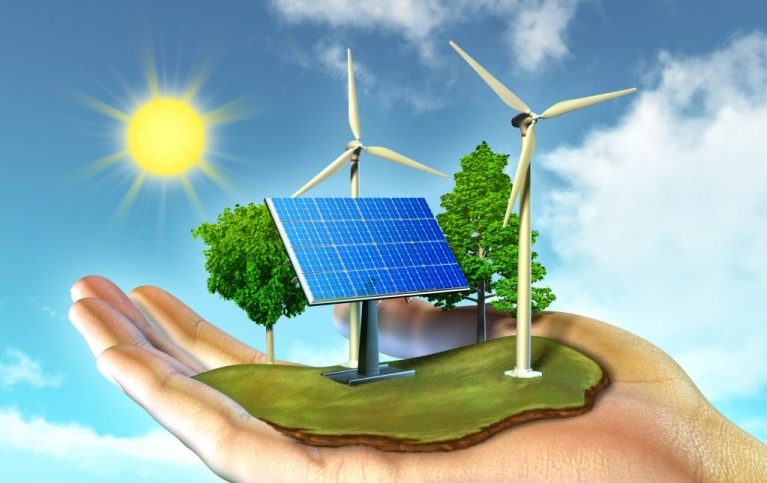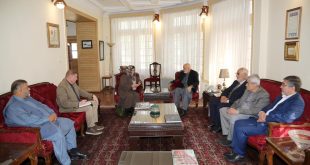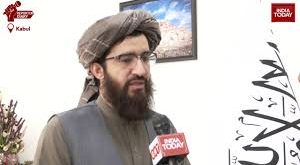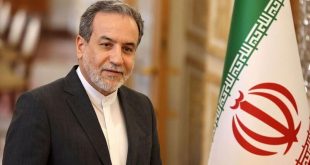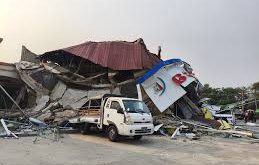By Alias Wardak-Electricity accounts for 18 percent of the total world energy demand with a growing rate of 2.7 percent per year. The International Energy Agency (IEA) views electricity security as “vital to well-functioning of modern economies” since all sectors depend on reliable and efficient electricity systems. Thus, electricity security is essential for a sustainable and socially responsible economic growth and should be one of the top strategic priorities of a country.
Afghanistan is a country with tremendous potential of renewable energy sources. According to the Ministry of Energy and Water of Afghanistan, the country’s hydropower potential is projected to be 18,000-23,000 MW and the solar energy potential is estimated to be more than 200,000 MW. Afghanistan’s wind energy potential is around 68,000 MW. Despite these exceptional figures, Afghanistan is importing more than 75 percent of its electricity from Central Asia and Iran which cost the country on average more than $ 200 million per year. The remaining 25 percent is domestically generated, mainly through hydropower and diesel generators.
Afghanistan needs to reduce its current dependency on electricity in order to pave the way for sustainable and socially responsible economic growth through utilization of its tremendous domestic resources. The current dependency on imports from Central Asia and Iran does not allow a long-term development and is an obstacle for the country’s ambitious strategy reflected in the Afghanistan National Peace and Development Framework (ANPDF).
The question is how should, in this regard, Afghanistan develop its enormous renewable energy potentials in the most effective and viable way in order to achieve electricity security?
Afghanistan’s focus on domestic electricity generation facilitated through public funding and private investments is a positive step towards the right direction. These major electricity projects will support the country to reduce its dependency on imported electricity and increase the government’s revenue through sale of electricity to industrial consumers and its neighboring countries. Hence, the envisaged implementation of the second phase of Kajaki through an Independent Power Producer (IPP) or Sarobi II hydropower plant financed by an Afghan investor are the first promising steps towards achieving electricity security. Besides these major projects of national and regional relevance, it is also important to develop a holistic concept for a sustainable electricity supply to the Afghan population that is affordable and easy to implement, operate and maintain.
According to the Renewables Global Status Report 2016 published by REN21, the share of renewable energy sources has increased during the last decade to 19.2 percent. In 2015, global investment in new renewable energy capacity was $ 265 billion[1], compared to investments in new coal and gas-fired plants amounting to a total of $ 130 billion. The power sector is leading the investments in renewable energy projects, with solar power being the frontrunner with 56 percent.
Despite concerns of certain interest groups in regards to reliability, predictability and costs of renewable energy (RE) projects, the above figures indicate a positive global trend with increasing investment observed in the recent years. These interest groups often provide a one-sided picture of economic disadvantages of renewables in comparison to fossil fuel resources without considering social and environmental aspects. The Levelized Cost of Electricity (LCOE) is a tool to estimate the cost of electricity per consumption unit. It considers the total cost of building and operation of power station over its economic life cycle. Moreover, LCOE method can be used to compare the efficiency of on type of plant with another (e.g. coal-fired plant in comparison to that of a PV-solar plant). Despite being an important estimation method, it does not take into account the social and environmental aspects of electricity generation through a specific source. A coal-fired plant for example looks less costly when comparing its LCOE with a renewable energy plant. However, the severe environmental damages caused by such plants, their impact on human beings and the associated recovery costs can be significantly higher than the initially calculated LCOE.
More than 1.3 billion people worldwide have no access to electricity, with more than 85 percent living in rural areas. Considering the poverty rate in these regions, it is of utmost importance to provide solutions that are not only taking into account the LCOE but also socio-economic and environmental benefits of electricity.
In Afghanistan, electricity produced through diesel generators can cost the customer 40 to 50 AFN/kWh (60- 75 $Cent/kWh), whereas the price for kWh electricity through renewable sources, such as solar and hydro, will rarely exceed30 AFN (45 $Cent/kWh). As reported by Innovation Energy in 2017, the unit prices for utility scale solar systems have been reduced by 78 percent and that of household rooftop systems by more than 70 percent in the last eight years, as result of more efficient installation techniques, lower capital costs and improved supply chain. Similar figures apply for others sources, such as wind. Considering these figures, it can be expected that the LCOE for renewables systems will decline further in the upcoming years.
Furthermore, renewables are eco-friendly, ensure electricity security and in case of off-grid solutions, they contribute to reduce the burden on the national utility). In the case of Afghanistan, the national electricity utility DABS can then use the spared energy to supply commercial and industrial consumers through grid electricity. This optimization process will contribute to increment of revenues for the national utilitythrough higher tariffs for commercial users, will reduce unnecessary loads on the grid and lead to consumers’ satisfaction. Reliable supply of electricity to commercial consumers will reduce the dependency on diesel generators and boost the competitiveness of their products as results of reduced production costs.
Laws and regulations that protect the consumer from low quality products and extensive costs for renewables is the responsibility of the government. Technical standards and norms can support the adherence to quality standards and has to be enforced by the government. At the same time, provision of incentives through reduction of taxes and duties on high quality products will encourage suppliers to import sustainable products. Moreover, the government supported by donor agencies should facilitate demand-driven capacity building measures and design of tailored operation & maintenance manuals that will secure operation efficiency and durability of the renewable systems.
Although the LCOE for generation of electricity through renewable sources is still higher than that for fossil fuel sources, the developments during the last two decades are impressive. Provision of energy through renewables for electricity, heating & cooling and transportation is not only focused on profitability, but also considers environmental and social aspects. Therefore, increased usages of these sources will not only secure the energy supply for the current generation, but also future generations will benefit from this approach.
The Power Sector Master Plan (2013) forecasts Afghanistan’s peak demand for 2032 to be 3,500 MW. Comparing the country’s demand with that of other countries in the region (e.g. Pakistan’s demand in 2030 shall be 45,000 MW), the prospect of reaching the targeted capacity level is not unrealistic if the involved stakeholders are able to take the necessary steps.
Afghanistan has large potential in generating electricity from renewable energy sources. The strategic direction of the Afghan government for the energy sector, reflected in the ANPDF, should be supported since the focus of the strategy is on self-reliance through deployment of the country’s domestic resources. Implementing big hydropower projects such as Kajaki and Sarobi II are important for the country’s economic growth and energy security. Furthermore, the major portion of electricity generated through Sarobi II, Baghdara and other planned power plants should serve for industrial use and exports to neighboring countries, in order to increase domestic revenues that support the country towards self-reliance. In addition, these measures will contribute to regional peace and prosperity facilitated through interdependency.
However, it will take years or these big power generation projects before they can generate electricity and income. Therefore, short and mid term solutions are required in order to secure a sustainable energy supply to the population, reduce the current load on the national utility and decrease the costs for electricity imports from Central Asia and Iran.
Small and medium scale renewable off-grid solutions coupled with energy efficiency measures (LED bulbs, building insulation etc.) can secure a major part of the country’s demand in case the right measures are in place.
In order to achieve these short and mid term goals, it is necessary that appropriate legislations and regulations are in place which ensure viability and encourage the private sector to invest and import high quality products to the Afghan market. Demand-driven capacity building measures coupled with tailored operation and maintenance concepts need to be designed and implemented in order to ensure the sustainability of the systems. Appropriate and feasible financing concepts (e.g. provision of loans by microfinance institutions) have to be part of the concept in order to make these small and medium scale renewable systems affordable to the population.
Advocacy and public awareness campaigns by civil society organizations and the media will increase the effectiveness of the off-grid electrification programs.
Alias Wardak is anenergy management specialist with diversified experience in the field of energy and energy efficiency in Germany and Afghanistan. His first book “ Life cycle assessment of buildings” has been published in 2016 in Germany. He is the Managing Director of a German Consulting Company in Afghanistan and Secretary General of “New Beginning” (NBN), an Afghan think tank based in Kabul. He can be reached at: [email protected]
[1]Without consideration of investments in hydropower plants > 50 MW
 Afghanistan Times
Afghanistan Times
